
The SPARKit board, where members of the community wrote what they’re doing to take care of their health. Photo courtesy of Nikki Hunt
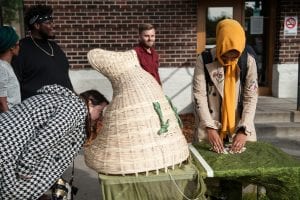
The Healing Hands project by artist Ifrah Mansour was part of the Springboard for the Arts’ collaboration with People’s Center Health Services in Minneapolis.
Photo courtesy of Bruce Silcox
This past summer, Springboard for the Arts and People’s Center Clinics and Services collaborated on a new project. The idea was to extend the community wellness mission of People’s Center beyond its walls and into a Minneapolis neighborhood through art, creativity, and culture. The result of this work was a summer of projects that transformed a community clinic into a community hub: a home for creativity, collaboration, social connection, and joy.
Springboard for the Arts is a community and economic development organization run by and for artists. Over the course of 14 weeks, it held weekly public art-making events on the green space outside the People’s Center, a nonprofit, federally qualified community health center that has been part of the Cedar-Riverside neighborhood of Minneapolis since 1968.
The People’s Center serves 9,000 people a year, 63 percent of whom are members of Minneapolis’ large Somali community. Patients and staffers of the People’s Center, along with community members and businesses engaged with mobile artist-designed tools that facilitated various participatory art-making events. A mobile printmaking press, an artist-designed ping-pong table, a portrait station, and other art activities got people talking, moving, and creating together. Projects like the mobile sign shop and the SPARKit trailer collected ideas and input from community members about health and wellness.
The projects catered to people coming to the clinic for an appointment or just passing by on the street, making it easy for people to pause, talk openly about health care, make social connections, and relieve stress through art creation. The project successfully brought together people from varying socioeconomic backgrounds and cultures, most notably Cedar-Riverside’s large Muslim population and non-Muslim community members.
When we set out to try this project, we weren’t really sure what to expect. Would people participate? How would the projects fit into the rhythm of the clinic? How could we make sure people were connecting to the resources that the clinic provides while they were there?
At first we thought we’d need to have clinic staff sign up for time slots and staff the projects to make sure participants built connections to the clinic and had access to health care information. After the first week we realized that this was completely unnecessary—the projects were fun and engaging so staff from the clinic wanted to participate in them. In doing so they were able to make relationships and start conversations with community members and patients much more organically than they would sitting behind an informational table.
These projects created natural connections between people in the neighborhood who might not otherwise be in relationship.
The effect on the staff was a happy discovery. Working at a community clinic is an important, high-stakes job, and the stress relief, camaraderie, and connection that staff members cemented to the clinic’s community-based mission as a result of participating in the projects became an important outcome of the work. Early in the summer, staff had the opportunity to make signs at the Mobile Sign Shop with artist Peter Haakon Thompson. Each staff member made a sign with a word that described what they loved about the clinic. Afterward, Peter turned the signs into an installation for the clinic waiting room, so that every day, staff and patients are greeted with a daily reminder of the values and people that make up their organization.
We also found that these projects created natural connections between people in the neighborhood who might not otherwise interact. People’s Center naturally brings Muslim and non-Muslim community members together in the same space; the art-making activities helped them get past the initial smile, to talk to each other and make art together. This was especially important because this past summer, the large Muslim population in Cedar-Riverside experienced a number of traumatic events including a bomb explosion at a mosque and the proposed travel ban on people coming from Somalia and other majority Muslim countries. Even though the art projects were small and temporary, they created a sense of ownership and connection that was deep. Sometimes neighbors would chat or make art together even after the clinic closed, and staff would stay beyond their shifts to play and talk.
Engaging activities that pass the time or give a person something to look forward to after an appointment, small moments of meditation or inspiration, and a welcoming, inviting atmosphere all helped to address some of the challenges that we think of as permanent parts of health care: wait times, fear, and anxiety.
The projects and the connections and atmosphere they created were a visible representation of Peoples Center’s mission in a new way. The clinic is committed to care and community and these projects extended that mission outside, giving the neighborhood a more visible way to experience the idea of health and care in their community. For example, one staff member reported this story:
“One afternoon, a woman named Mary stopped her car just outside of the clinic to check out the letterpress. While visiting with her we learned about her background as an artist and discussed her personal health situation and the services of People’s Center and Springboard. She opened up about her medical bankruptcy and how she is looking for more affordable care. She left the encounter after about 20 minutes saying, ‘Wow, I am really glad I stopped.’ And so were we. She reminded me about the intent behind this project and even if she does not become a regular patient at the clinic today, she left the clinic feeling better and more hopeful about life.”
Small projects repeated weekly helped establish the clinic as a home for this kind of creative community building. It gave staff and artists time to build relationships and get to know one another. It meant that we could learn and make changes as we went instead of needing to plan everything. Having many small projects also allowed for a wide variety of projects, engaging many different kinds of people. Some projects were designed to facilitate interaction through games and conversations; others engaged people directly in thinking and talking about their health and giving the clinic new insights into how their community views wellness (many participants expressed a broad definition of health that included culture, faith, and family); and others, like Ifrah Mansour’s meditative Healing Hands project, were meant to provide moments of quiet reflection, respect, and care for neighbors.
Why It Worked
Part of what made this project work is that Springboard and People’s Center already had a long partnership through Springboard’s Artists Access to Healthcare program. We’ve collaborated on health care vouchers for artists at the clinic, free screening days, and health fairs, so we knew each other and understood each other’s work and missions. Our previous work to ensure that artists have access to health care also created reciprocity for this project. We knew that every artist who was working to engage folks on the lawn of the clinic could also be a patient at the clinic if they needed health care for themselves or their families (whether artists have access to health care themselves is an important nuance that is often overlooked in other arts and health initiatives.) We also have shared and aligned values as organizations, which is a key ingredient to a successful partnership. Even though it might seem like a clinic and an arts organization are different, we share fundamental values that create a foundation for us to build on.
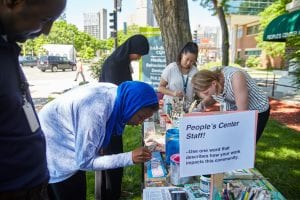
The Mobile Sign Shop by artist Peter Haakon Thompson engages People’s Center staff members in making signs for a lobby installation that reflects the values of the clinic. Photo courtesy of Uche Iroegbu
We now see the beginnings of inter-community dialogue and shared community space and we are excited to build on the success of these projects in even deeper ways. We know we want to continue to work together to make space in the neighborhood for interaction, relationship, joy, and reflection. We plan to continue regularly scheduled arts activities and add a part-time artist organizer (think artist-in-residence crossed with community organizer) to utilize People’s Center’s existing network of neighborhood partners—including organizations, religious institutions, and universities—to attract community members, design ongoing events to engage community, create shared experience and spark social bridging, and build on the success of this summer.
We believe that true community health requires access to excellent health care and it also requires access to creativity, visibility, and power. Art and culture create paths for connection, belonging, and communication, allowing us to truly see and know one another’s humanity. By intertwining individual and collective health with creativity, our goals are to increase justice, empathy, joy, and love, as these are preconditions to imagining new futures and healing systemic inequities at their root.

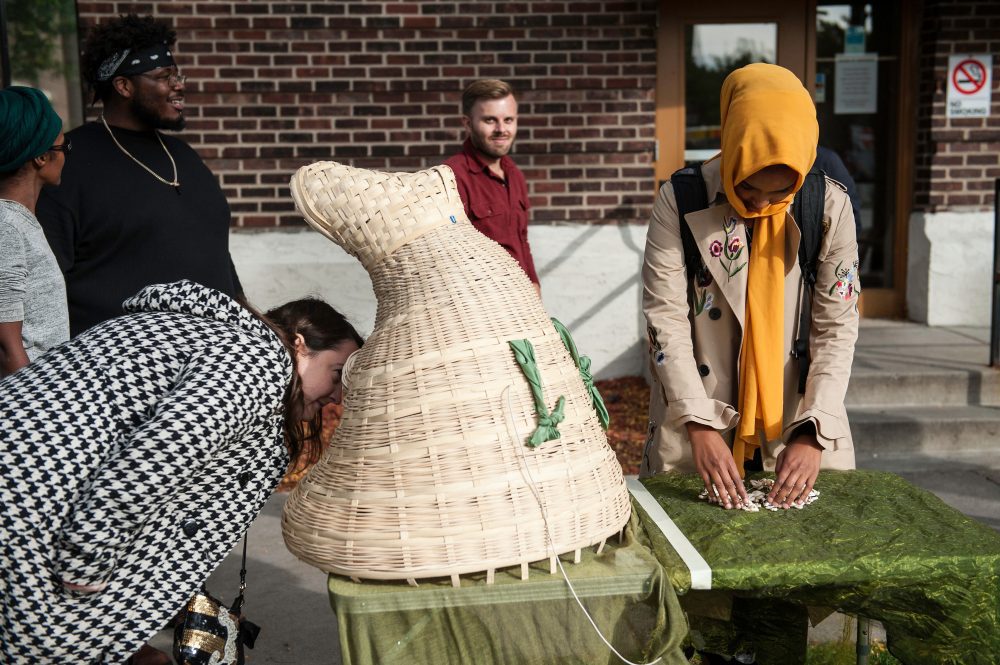

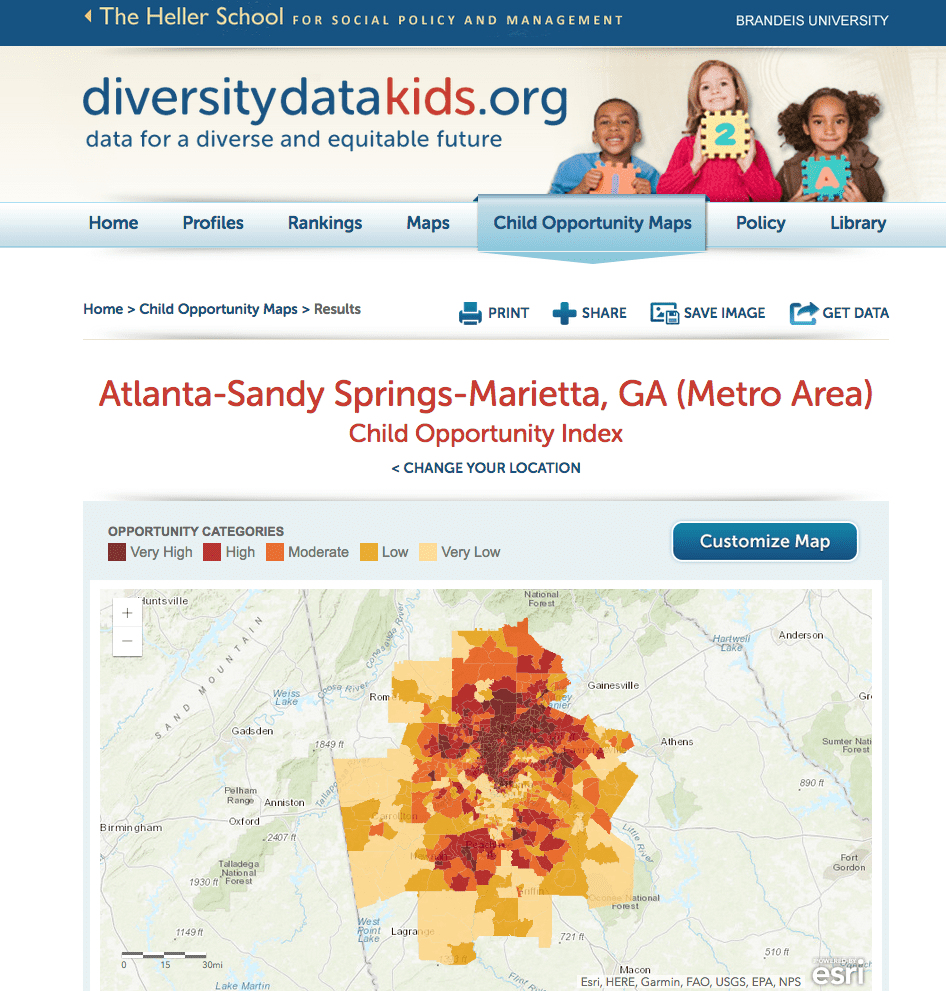

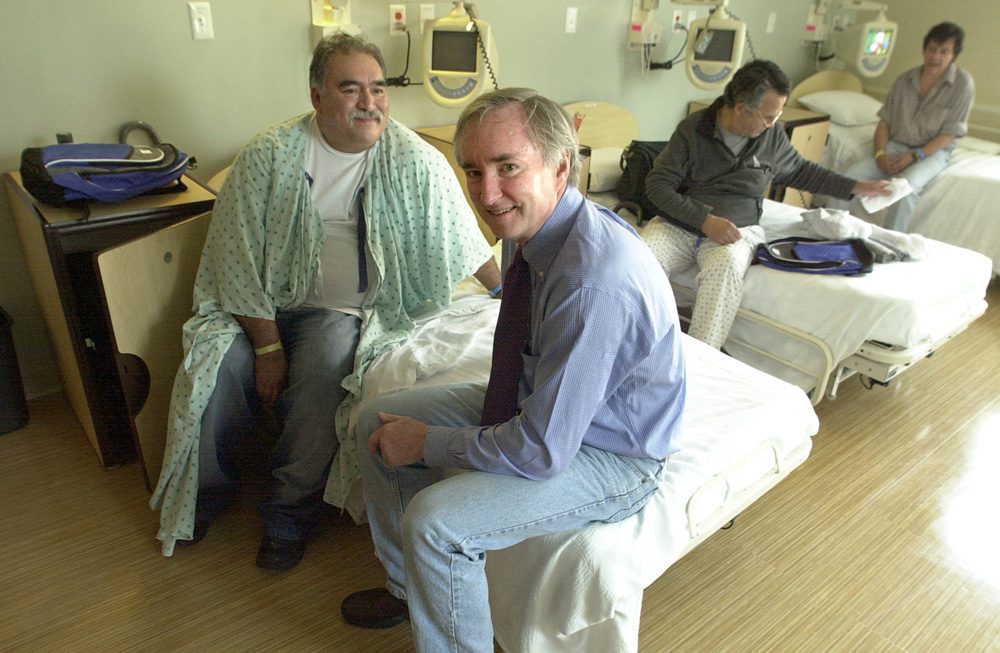
Comments